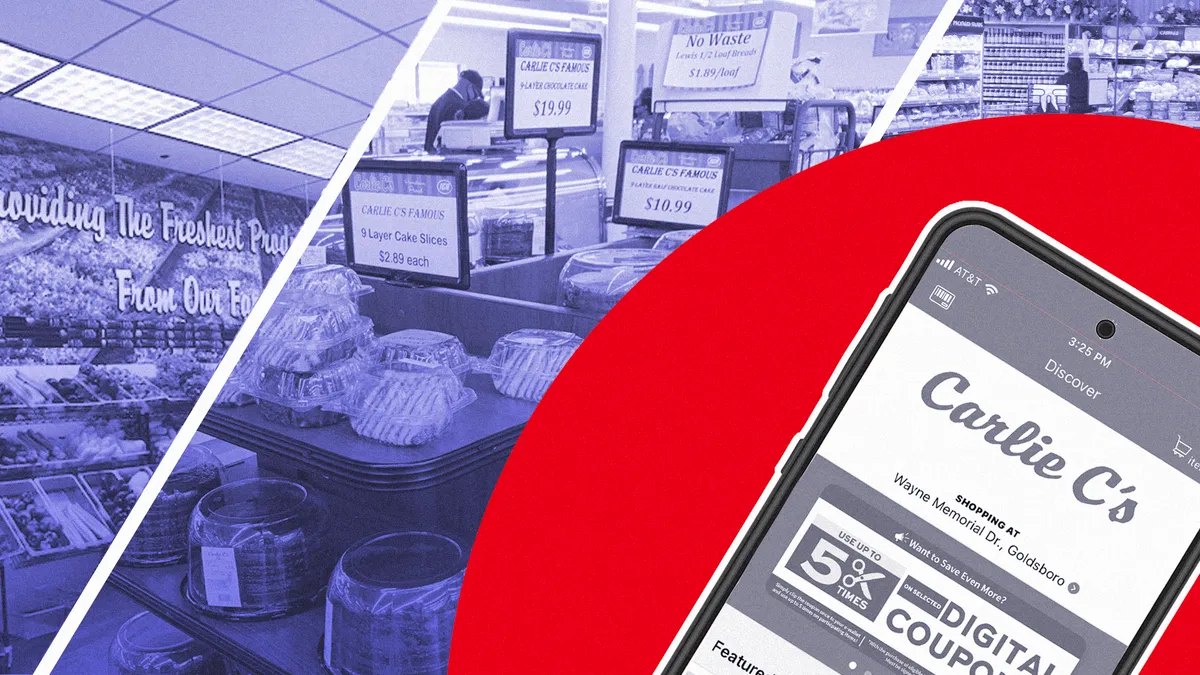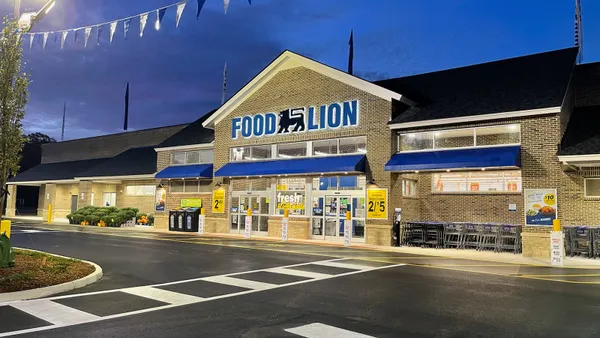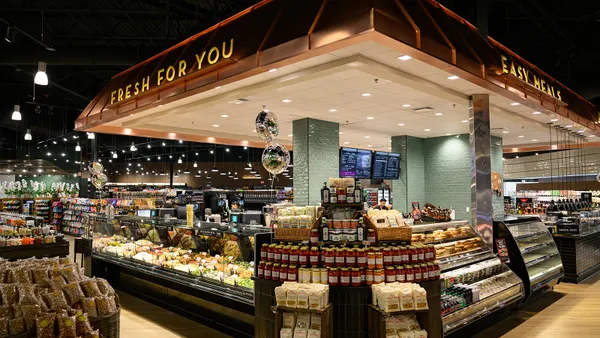This is the third article in a three-part series looking at the rise of SNAP online purchasing.
The Cameron Market in Cameron, Missouri, and Carlie C's IGA in North Carolina jumped at the chance to make e-commerce available for their SNAP shoppers when the federal government opened up its SNAP Online Purchasing Pilot last spring.
As the first peak of the coronavirus pandemic hit the U.S., both entered the government's process with the same e-commerce provider, Freshop. Their experiences rolling out the capability, however, have been different. Carlie C's IGA has been virtually ringing up SNAP customers since October, while The Cameron Market awaits approval to go live.
The journey to set up online payments for Electronic Benefits Transfer (EBT) cards has been a mixed bag for grocers. Some have hit roadblocks with the costs, complexities and challenges that come with the U.S. Department of Agriculture's (USDA) pilot, while others have traversed the process with few or no bumps.
For The Cameron Market, going through the pilot's steps, which include an initial application, working with a payment processor and testing the technology, has been a "long" process, owner Tony Clark wrote in an email.
Located about an hour north of Kansas City, Missouri, The Cameron Market is one of three independent stores owned by Clark's family. In the congressional district where the grocer is located, 7% of households received SNAP benefits in 2018, which included roughly 46% with a child and 54% with a person with a disability, according to USDA data.
"I understand completely that the pandemic severely slowed this whole process, but I really figured the process would be much faster," Clark wrote, adding that he originally expected the store "would be up and live within a couple of months of turning in my application [to USDA]."
Several parts of the process may have stalled his store's progress, Clark said, including the requirement that its e-commerce is authorized separately from its brick-and-mortar location for SNAP. Clark also spent extra time setting up a new account for EBT payment processing with Fiserv, the financial services technology company partnered with the USDA for the pilot.
To keep making headway, Clark has been responsive to the USDA’s information requests, "usually getting back to them the same day."
"I know that [the USDA] is overwhelmed," Clark said.
The nine-month-long wait is putting The Cameron Market at a competitive disadvantage to Walmart, which has been offering SNAP online purchasing in the state since last spring, Clark said.
A Walmart Supercenter and Dollar Tree are less than a mile away from the store, but because transportation can be a "real area of need" for some local SNAP recipients, Clark hopes his store's delivery services will lure customers from the retail giant.
On top of the wait, Clark said he’s also concerned about the costs associated with offering SNAP online purchasing, mainly stemming from the payment processing fees. "I don't know how a single operator could afford to accept [online EBT] transactions unless they did a lot of business," Clark said. "It will be tight for my 3 store group, but I am willing to invest as a benefit to my EBT customers in offering the ability to utilize online shopping."
Smoother than expected
In North Carolina, Carlie C's is juggling SNAP online orders as it gains its footing with e-commerce.
The 25-store regional chain stretching along the state's Coastal Plain rolled out online ordering in fall 2019. "We just had gotten most of the bugs out, type of thing, when COVID hit," Mack McLamb, president of the chain, said, adding that volume increased 25-fold when the pandemic swept the U.S.
The grocer pushed ahead with expanding its shopping options for SNAP recipients, and in late October, Carlie C’s joined Amazon and Walmart with offering SNAP online purchasing in the state. The rollout came as "we were just getting to the point where we could catch our breath" with the e-commerce spike, McLamb said.
McLamb said he was prepared for delays due to the bureaucracy of working with the government, but was surprised at the speed at which the process moved along. "It really wasn't as difficult as what we were making it to be, and once we understood what they were looking [for], that was pretty good," McLamb said. He also said at one point he thought the government needed information from all 25 stores, but then realized that wasn't the case.
Still, the chain faced some challenges, mostly when it came to adapting EBT online payments for Carlie C's Android and iPhone apps. "They're very similar, but they're almost like three separate projects," McLamb said. The testing process to see how SNAP online purchasing works was the most time-consuming part, McLamb said.
While Freshop worked with the first independent retailer, Wright's Market in Opelika, Alabama, to offer SNAP online purchasing last year, McLamb said he wasn't expecting the process to be fast or easy. "For the most part, it went really smooth, but it's not something you can turn around quickly," he said.
Clark agrees that despite the delays, the process, so far, is "easier than expected."
Both Clark and McLamb said Freshop played a large role, giving them resources throughout the process. "But it is the [retailer's] responsibility on all levels to complete the process," Clark said. "This is a contract between the retailer and USDA, and Freshop and the retailer to provide the platform."
McLamb said he thinks the process of joining the government’s program will continually get faster for grocers as more technology vendors roll out EBT online payments.
He has two pieces of advice for grocers: First, start offering and ramping up e-commerce options if they haven't already, and second, consider how quickly they want to roll out SNAP online purchasing. If they want the process to be easier, then wait for the e-commerce provider to roll out the capability with other grocers first.
"If you want it faster, then you have to be [one of the] first and you have to take some of the blood going through the round first," McLamb said.
Next steps forward
Like many independent and regional grocers in the Southeast, Carlie C's has "a lot of SNAP customers" shopping in-store, McLamb said, declining to provide specific figures.
"Most of the time, independents and chains our size and smaller, we have a disproportionate number of EBT SNAP customers as a whole in relation to our total business," especially in the Southeast, McLamb said. In North Carolina, 717,999 households participated in SNAP benefits in September 2020, according to USDA data.
Despite the number of potential customers, he expects it will take "a while" to develop the online SNAP customer base and, so far, has held off on marketing the new offering to work out any unforeseen issues. But already, the chain is seeing demand. "Online SNAP is continuing to grow," McLamb said. "We're having more and more people use that service."
Now that Carlie C's SNAP online purchasing is live, shoppers can pay with their EBT card using their desktop or the grocer's Android and iPhone apps. Shoppers have the ability to check the balance on their EBT cards and can choose how much of their benefits they want to apply to the order. Orders containing items that are not SNAP-eligible or that have a delivery fee require a debit or credit card. Items are priced the same online as they are in-store, McLamb said.
When they checkout, they have the option to pay with EBT SNAP, EBT Cash or a debit or credit card. They can also pay in-person for pickup orders.
Carlie C's doesn't charge a fee for pickup, but does have a delivery fee, McLamb said. While the grocery chain does not have minimums for online orders today, charging a fee for small purchases or requiring an order minimum without a fee are both under consideration, McLamb said. "It really becomes a pretty big loss to get a very small order up," he said.
For The Cameron Market, Clark said the grocer removed its $35 order minimum for deliveries to allow for online EBT payments. The rest of its pricing structure, though, will apply to SNAP recipients: free pickup for orders $30 or more and free delivery for orders $100 or more. Customers with orders under $100 will get charged $4.95 for delivery.
These plans will soon come to fruition. After months of waiting, The Cameron Market is nearing the finish line: Testing is slated for mid-February, and Clark expects the rest of the process to move "very quickly now."
"This is very exciting, especially for a small, independent retailer to be one of the first in the nation to offer this service for our customers," Clark said. "Truly, if I can do this, then anyone can do this."
The Online SNAP series is brought to you by Mercatus, a recognized leader in grocery eCommerce technology. To learn more about their SNAP EBT Online solution and access resources, visit their website here. Mercatus has no influence over Grocery Dive's coverage within the articles, and content does not reflect the views or opinions of Mercatus or its employees.












